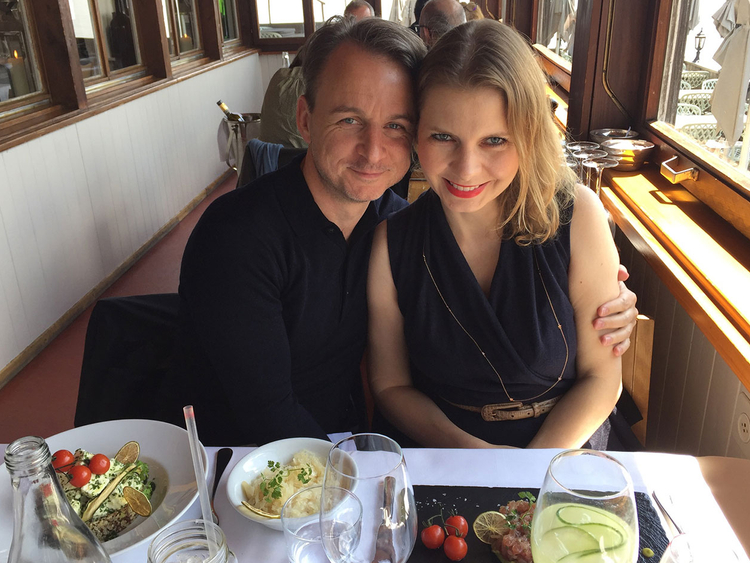
One of the strong values that defines Jamaican culture is treating others with respect and being grateful and appreciative of them, and this is amply reflected in times of sharing a meal. There are strong influences of British and North American cultures.
“There are a lot of influences from the British era (Jamaica was once under the British rule) and we follow that in terms of the table setting and use of dining ware and cutlery. We’re also influenced by [a mix of] American culture. Guests are expected to arrive on time and take their shoes off at the door. Then they’re escorted to their seat at the dining table. It’s unacceptable for guests to assist with the setting up of the table.
“The host and hostess sit at each end of the table, and the older children sit close to their father, whereas the youngsters sit near their mother. The quantity and range of the dishes depends on the family’s size and social status. If it’s a small family, then it’s informal self-service, whereas, when there is a larger head count, the hostess serves the guest.
“The variety of meals depends on how much you want to impress your guest — out comes the silverware and there are more colourful plates of potato salad, rice and peas, kidney beans, beef, chicken, etc … and freshly squeezed fruit juice from our local cherry, carrot and apple produce. At all times, we serve fish or chicken dishes that are accompanied by either rice and peas or ground cereals.
“Usually, all the food is brought to the table at once.
“When it comes to serving, the father figure gets served first, followed by the guest, and conversation is always flowing while dining, but it is never considered a good thing to talk with food in your mouth.
“It’s also best not to leave food on your plate and you should never leave the table before everyone finishes. Also, it’s best to keep your arms and elbows off the table.
“The food setting at the table is usually dependant on the occasion or the size of the dining area.
“Guests are expected to stay around for a while after having their meal, unless they have a reasonable excuse to depart soon after the meal.
“When it comes to entertainment, we generally play music at home and play games such as domino and on the odd occasion, we may watch old Jamaican movies or comedy skits.
“Living in the UAE, we have come across diverse cultures, mostly Indian, Filipino, African and Caribbean diaspora nationals.”
“The significance of Austria’s dining etiquette culture probably comes from it being very similar to European etiquette. Back when the country was a monarchy, dining etiquette was a big deal in upper-class royalty. It was mostly transmitted within families, and therefore strongly dependent on one’s social background, income and status.
“Between 1850 and 1910, people would dine with the emperor, and there was a main rule of thumb: once the emperor lays down his cutlery, all invitees had to follow suit and stop eating. The emperor back then was not a fan of such rituals, and would therefore eat before the guests arrived. The only issue was that he was no longer hungry at such formal dinners and would hardly eat. This made the eating sessions quite short and left the guests feeling hungry, as they had to stop eating once he did. The invitees had no choice but to eat very quickly to get some nourishment.”
On the other hand, poor families shared communal platters in the past, and older people starved because they couldn’t eat fast enough and were left without food.
“Austrian culture is mainly influenced by the Germans where it’s common for men to cook and help with the table set-up. It’s about being together and socialising and spending the whole evening, about four hours at the dining table. Guests should never arrive early, in fact we have something called the academic quarter, in which it’s alright to arrive 15 minutes late. You should always greet both host and hostess, and never ignore female hostesses.
“Guests are free to sit anywhere they want. In formal settings, everyone receives their plates with food on it, whereas, in a more informal setting, it’s self-service. Your elbows have to always be off the table.
“A set of cutlery is used and you work your way from outside in, and you should make minimum noise with your cutlery. You should use a knife, not your hands, to cut bread. Potatoes are always eaten and cut with a fork, knives are never used to cut them.
“I always use cutlery and seldom eat anything with my hands. Your arms should always remain close to your body.
“The napkin should never be totally unfolded, as it’s impolite. It’s also considered impolite to leave food on your plate, as the host would consider it’s a waste or that you didn’t like the food.
“Also, the host should keep an eye on the guest and not wait for their plates or glasses to be empty, and never remove people’s plates until they have finished eating.
“Meals are always served on a course by course basis, we hardly ever serve everything at once on the table. If it’s more of a formal invite, three courses are usually served, whereas two or even only one course is served in a more informal setting.
“Two of our most traditional dishes are wiener schnitzel — fried veal cooked with flour and a mixture of milk and egg, along with white breadcrumbs, served with potato salad — and the tafelspitz, which is a beef dish cooked in a special soup with vegetables and potatoes, until it becomes very tender.
“It’s very rude to leave immediately after eating, because the evening is a social gathering. We spend about three-and-a-half to four hours dining and exchanging vibrant conversation.
“There is no strict timing as to when the guest should depart, however, when the host no longer offers you something to eat or drink, or asks you if you want something in particular, it’s time to leave.
“In the UAE, I have German, Austrian and British friends and I also mingle with Iraqis and Emiratis.
“While dining with them, I realised that all them are really internationalised, they all follow the known and practised universal dining protocol.”








